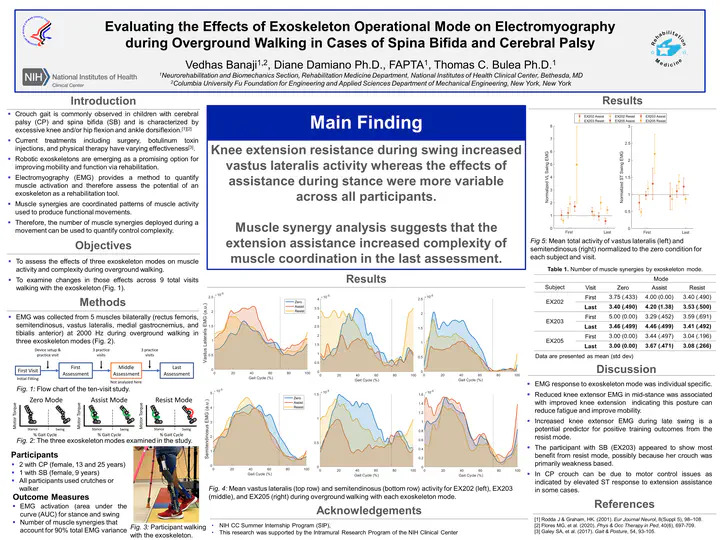Evaluating the Effects of Exoskeleton Operational Mode on Electromyography during Overground Walking in Cases of Spina Bifida and Cerebral Palsy

Abstract
Crouch gait, primarily characterized by excessive knee and/or hip flexion and ankle dorsiflexion, is a common gait pathology observed in children with cerebral palsy (CP) and spina bifida (SB). Children with crouch gait use more energy to walk, especially as they grow, and consequently locomotor function often declines with age, with up to 50% of ambulatory children suffering loss of mobility by the time they reach adulthood. Robotic exoskeletons have emerged in recent years as a promising option for improving mobility and function in children with crouch gait. In an ongoing study conducted by the NIH CC's Rehabilitation Medicine Department, the effect of a new exoskeleton that can operate in three modes (conditions) – one that assists knee extension, one that resists knee extension, and one that provides zero assistance or resistance – on muscle activity and gait kinematics across ten total visits is being studied. This project focuses specifically on the muscle activity effects through processing of surface electromyography (EMG) data collected from the tibialis anterior, gastrocnemius, rectus femoris, lateral hamstring (semitendinosus), and vastus lateralis muscles. The EMG data from three participants (two with CP, one with SB) was processed to assess changes in muscle activation and synergies (coordinated muscle activation instruction sent from the brain stem) as a result of walking with the exoskeleton in the three different modes during the 10-visit study period. Changes in muscle activation and coordination would indicate further investigation into the exoskeleton for early intervention in children with CP, SB, and other musculoskeletal disorders.
Type
Publication
At NIH RMD Poster Day